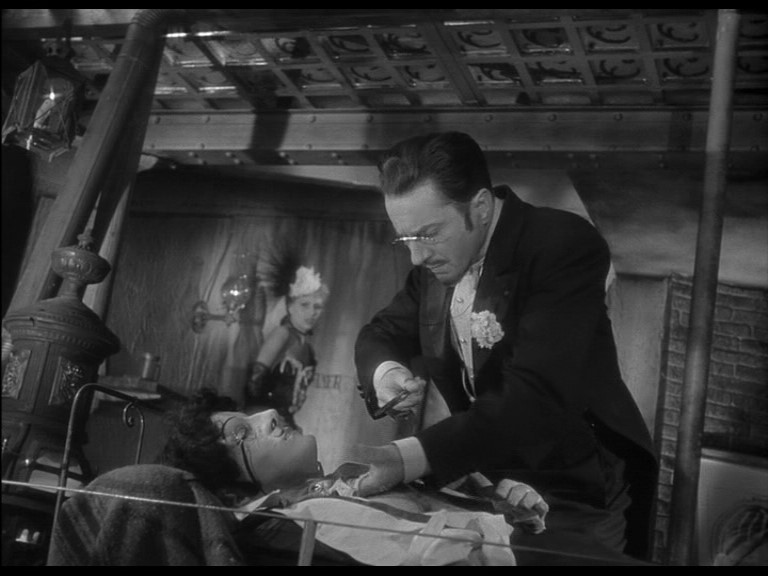 Le Plaisir (1952) is perhaps the best example of Ophüls' magical camerawork that I can think of (I really need to rewatch Madame de...! Oh, and that's one of the greatest films ever so GET TO IT if you haven't already, cunt.) The opening sequence finds his camera frivolously sweeping into a ball, waltzing past the absurdly attractive artifice of the ballroom, before performing an effortless dance with a masked lothario which intensifies to a literal breaking point - one that concludes by exposing the playboy as an elderly married man!
Le Plaisir (1952) is perhaps the best example of Ophüls' magical camerawork that I can think of (I really need to rewatch Madame de...! Oh, and that's one of the greatest films ever so GET TO IT if you haven't already, cunt.) The opening sequence finds his camera frivolously sweeping into a ball, waltzing past the absurdly attractive artifice of the ballroom, before performing an effortless dance with a masked lothario which intensifies to a literal breaking point - one that concludes by exposing the playboy as an elderly married man!One would think that Ophüls would let up slightly after this breathtaking introduction, but that's unheard of in this director's rulebook. He simply builds on that momentum and takes it to further extremes: other stylistic masterworks featured in this one film include a wistful glide around the exterior of a lively brothel, and a single-take PoV shot of an attempted suicide. In terms of structure, Le Plaisir is an unusual translation of three stories into a portmanteau film featuring two small (but very effective) bookends and a lengthier central segment. Each explores the pursuit of pleasure, and the ways in which our desires can overwhelm our lives. Even the charming middle-section concludes its countryside soirée on an unbearably poignant note before quietly criticising the amorality of its patriarchs. Typically for Ophüls, he veils his critiques with a stylistic opulence (I dare someone not to be awed by the film's mise-en-scène) which is too frequently dismissed for lacking substance. What this fails to consider is that Ophüls' style is his substance, and thus the grandeur of these sets is a moving overcompensation for the hollowness of these characters' lives. When the film concluded by stating that "happiness is not a joyful thing", I actually found myself moved to tears? LOL. This is so emblematic of Max: his cinematic seduction is a delicious-but-frail guise for the undercurrents of emotion that lurk beneath, and without even fully comprehending why, the audience always finds itself moved by film's end.
Quick shout-outs to Danielle Darrieux, Jean Gabin (always marvellous, the both of them) and especially Simone Simon's work in the final segment. Also, the scene at the church is sickeningly beautiful.
No comments:
Post a Comment